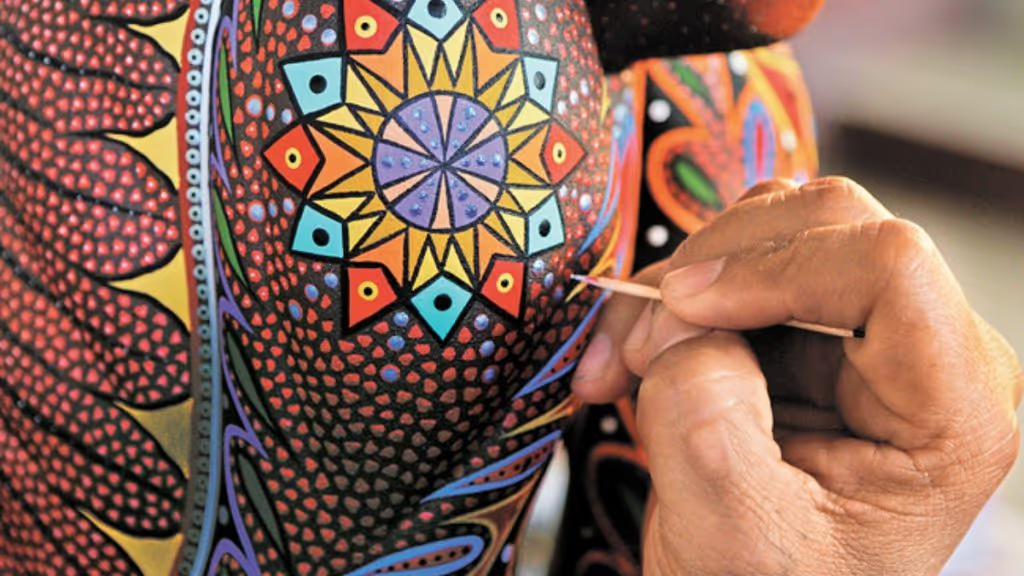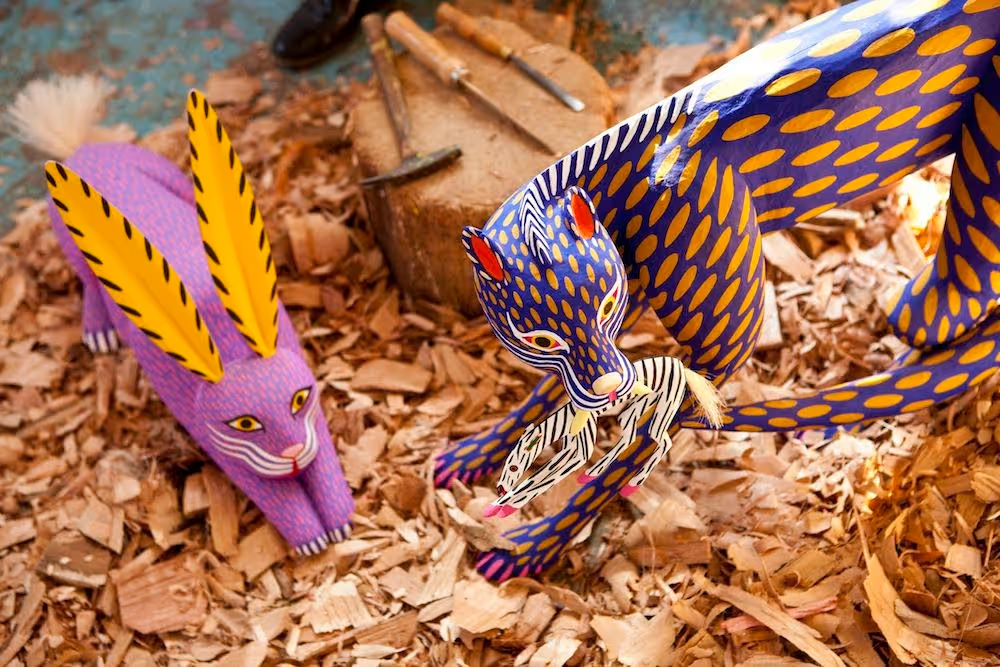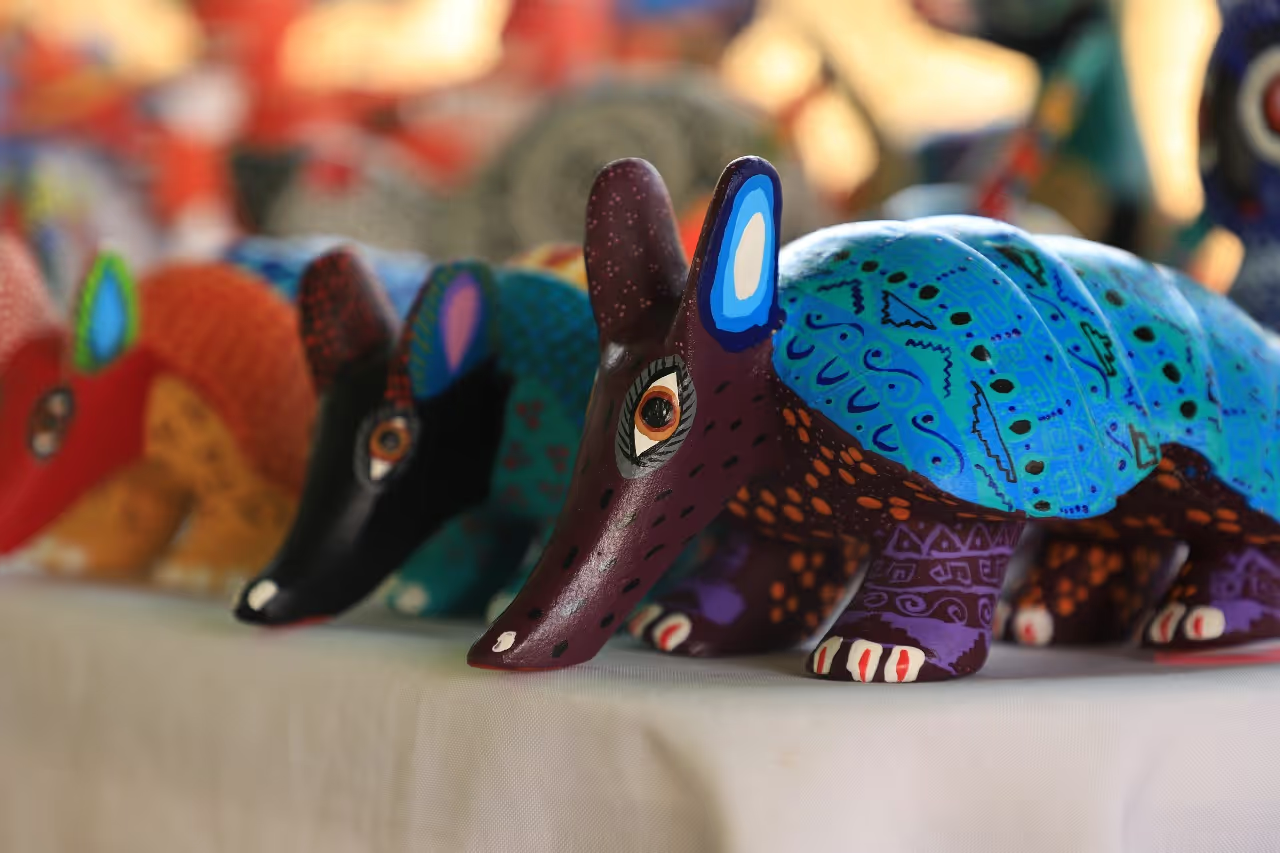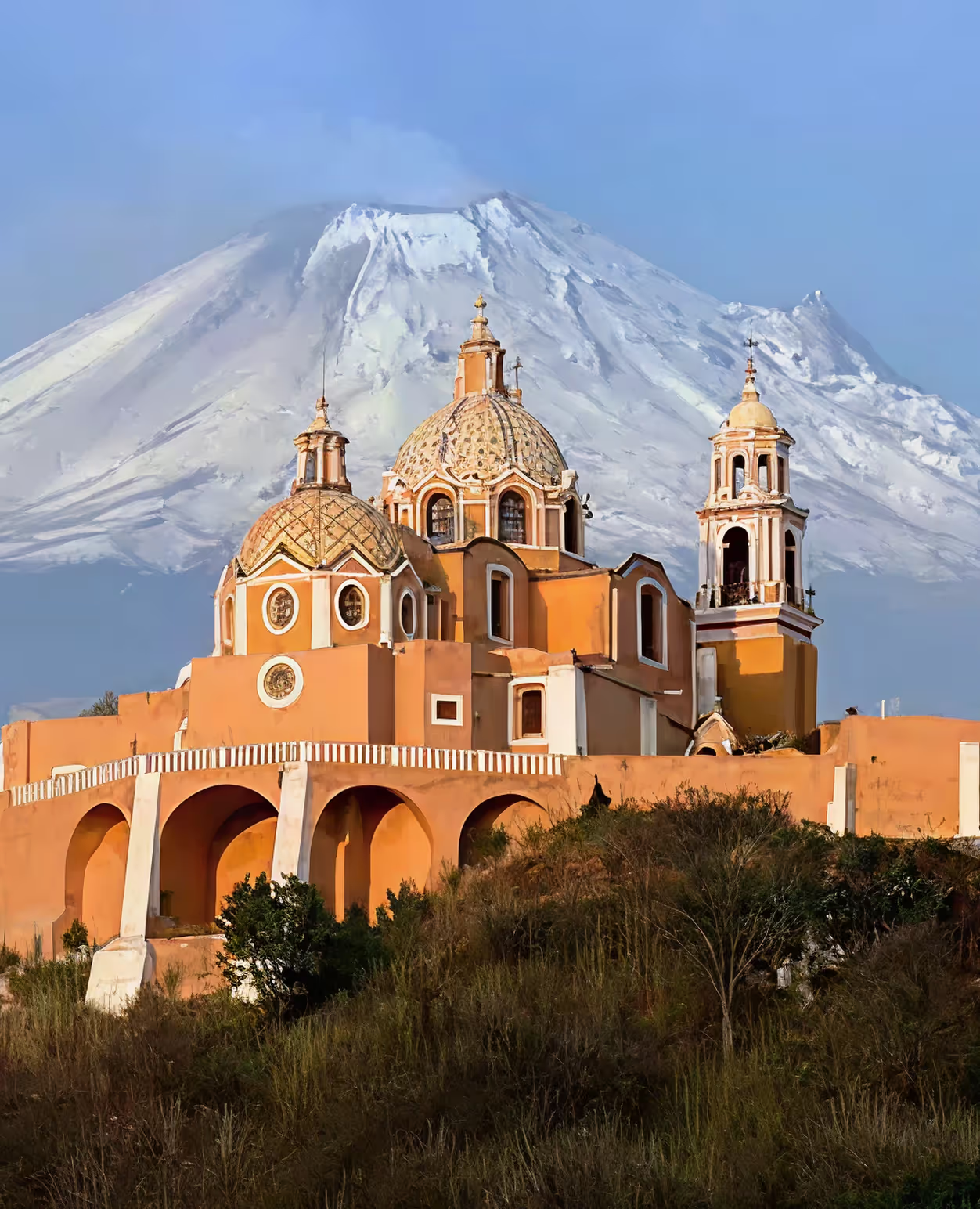Plan your trip
Plan my custom trip
Request a quote
Customize my trip
Design your trip




Oaxaca is one of the states with the most incredible variety of handicrafts. Here, you can find everything from handmade clothing to decorations crafted from traditional materials such as black clay. According to the indigenous traditions that prevail in Oaxaca, everything has a special meaning. One notable example is the alebrije, which is regarded as a Mexican spirit animal.
Alebrijes are beings with the physical features of one or more real or imaginary animals. One of the most notable aspects of these crafts in Mexico is that each alebrije is unique. Additionally, the artisans of Oaxaca combined handcrafted sculpture with a pre-Hispanic concept to imbue them with spiritual meaning.

An important aspect of alebrijes is that they are dyed with natural pigments in vibrant colors, each carrying its own meaning. For example, green signifies empathy and nature, while brown symbolizes the earth and animals. Additionally, the following colors represent various emotions: pink stands for love, yellow expresses joy, and orange helps release negative feelings.
The nahual is a belief of several pre-Hispanic cultures, especially among the Maya, Toltec, and Mixtec cultures. These beings can transform into animals, allowing them to communicate with nature. In some of these cultures, this ability is linked to the divine, as the gods were also associated with specific animals.
This ancient belief inspired the alebrijes of Oaxaca, representing people’s animal counterparts. These Mexican spirit animals may appear in dreams and reflect one’s character traits and abilities. For instance, someone associated with a bird is likely to have a beautiful singing voice.

According to pre-Hispanic traditions, everyone is assigned a spirit animal at the moment of birth, determined by the day and year of their birth. These guiding spirits are called toná. In the Zapotec calendar, 20 different species of animals represent the tonás.
In the Zapotec culture, the ritual for recognizing a newborn's toná involved placing a circle of lime. The next day, the footprints that appeared would reveal the animal that would become their toná, indicating the child’s personality.

Each animal carries its own meaning; here are a few examples. A person with a coyote or wolf toná is tenacious. Armadillos symbolize strength, while cats represent independence and freedom. Dogs signify loyalty and protection, and those with the dragon toná are passionate individuals.

An alebrije is believed to protect you and ward off evil spirits. One of the towns in Oaxaca where you can find personalized alebrijes is San Martín Tilcajete. Don't miss the opportunity to visit an alebrije workshop and discover their creation process. Which alebrije do you think is your spiritual guide?
***
If you liked this article, we recommend you:
A Route through the essence of Mexico: welcome to Oaxaca.
The Ultimate Guide to travel to Oaxaca


